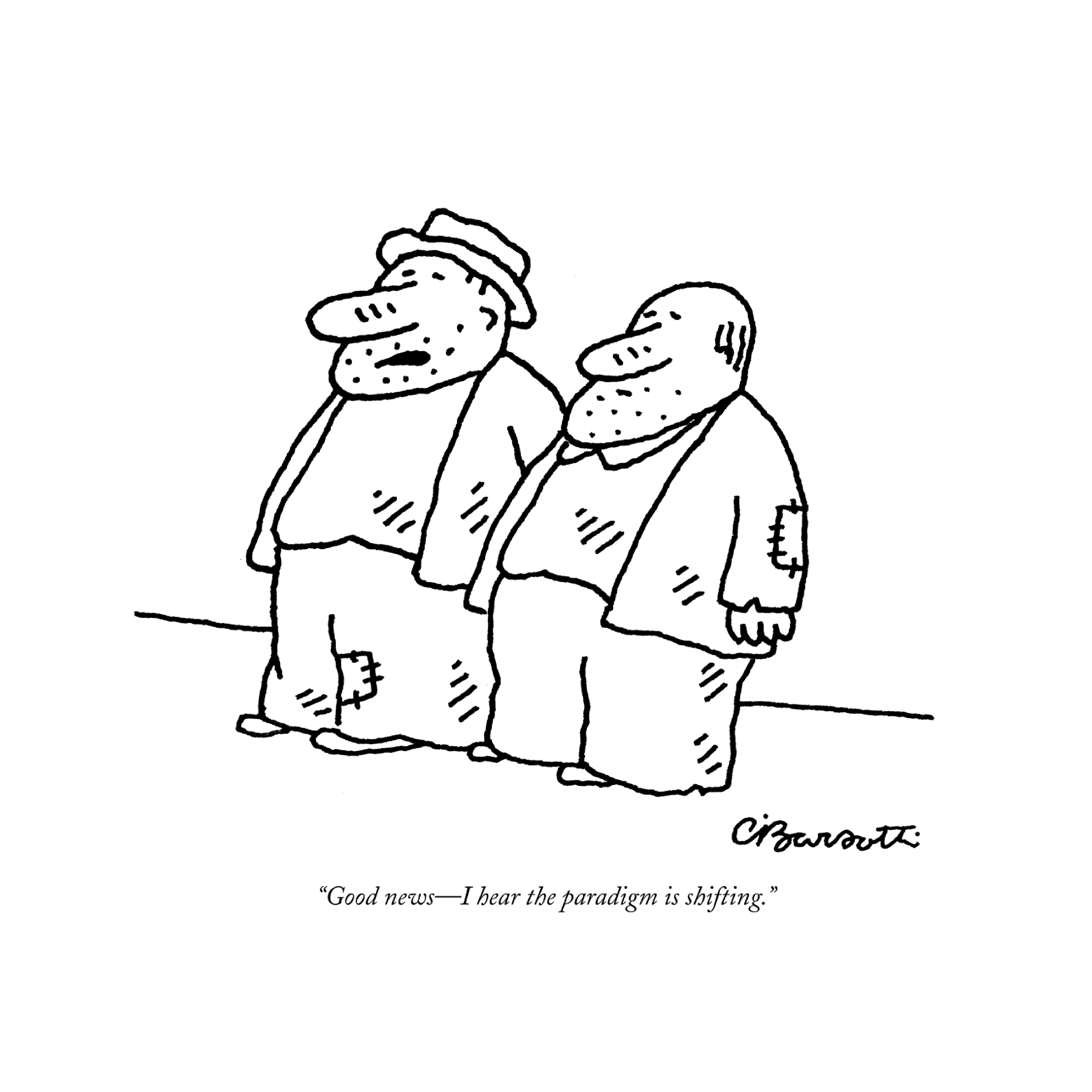The Ad Industry in 2018 -- The Year of Magical Thinking

Sir Martin Sorrell, the industry's most prominent agency spokesman, now has the difficult job of explaining, on behalf of WPP and of the industry in general, why revenue growth has been so difficult to achieve and what can be done about it. Since its peak in 2015, WPP shares have fallen 28% in value. In the main, Sorrell points his finger at "major customers, who are holding back ad spending to cut costs, and the long-term impact of technological disruption and the short-term focus of zero-based budgeters, activist investors and private equity."
"We feel the machine slipping from our hands,
as if someone else were steering.
If we see a light at the end of the tunnel,
It's the light of an oncoming train." -- Robert Lowell
Marc Pritchard, Chief Brand Officer of Procter & Gamble, is equally outspoken on the advertiser's side. "We've outsourced too much of our work," he says. "2018 is the year we take back control to transform the industry … stripping away anything that doesn't add to creative output." P&G has slashed the number of agencies it works with by 60% and cut agency and production costs by $750 million. By 2020, it expects to have cut another $400 million on top of that.
WPP's plan, Sorrell says, is "greater cost efficiency" -- breaking down silos among its various creative, ad buying, strategy and public relations businesses to draw on top talent and seamlessly serve clients. "In this environment, the most successful agency groups will be those who offer simplicity and flexibility of structure to deliver efficient, effective solutions -- and therefore growth -- for their clients."
Brian Wieser, the industry's leading security analyst, reports from the sidelines: "It should never be all doom and gloom for agencies. They continue to contain vast networks of entrepreneurial individuals, most of whom are capable of continuously finding new ways to generate revenue."
There we have it -- representative thinking across the industry to deal with two related growth problems:
- Brand stagnation in the marketplace. Legacy advertisers have seen product and revenue growth come to a halt during the past decade, and this is putting pressure on Boards of Directors, CEOs, CFOs, CMOs and profit center heads. Procurement has been unleashed to make up the shortfall by cutting costs. Marketing has lost much of its muscle, so it is turning its ire on its agency partners and investing in internal agency operations.
- Revenue stagnation among ad agencies and holding companies. Media spend cuts and creative agency fee cuts have provoked agency downsizings. Predictably, the downsizings have cut costs but have led to an own-goal regarding agency skills. Agencies now have a reduced capability to solve their clients' brand stagnation problem.
Advertising magical thinking. Pritchard says that agencies need to deliver "more creativity" (even though their relationships and fees are under attack). That's an example of magical thinking. What P&G needs is more "effectiveness" from its agencies, not "more creativity." The two are not necessarily related. Burger King is perceived as a highly creative advertiser … but it remains stuck at No. 9 in fast-food restaurant performance. Getting greater effectiveness from an agency requires mutual investment, upgraded agency skills and intimate working relationships. If 2018 is the year P&G takes increasing control of its work, forget about intimacy. P&G agencies will be further relegated to executing client-determined SOWs with too few, very underpaid, underskilled people.
Holding company magical thinking. Further consolidation of holding company operations may be required to eliminate unnecessary costs, but cost reduction will not restore holding company agencies to the level of competence required to regain respect and influence over client results. Agencies have a pricing problem, not a cost problem. Their fees have been declining for decades, while their workloads have been growing. The price of agency services has declined by two-thirds in the past 25 years. Putting a floor under pricing is the No. 1 priority for agency and holding company CEOs, but it's not even on anyone's list. Documenting and negotiating their Scopes of Work -- something they do not do at all -- would be a good start.
Entrepreneurial magical thinking. The entrepreneurial individuals in agencies generally vote with their feet and get out to do entrepreneurial things -- they do not stay to fix the revenue and profit problems of their troubled agencies. Ask Tongal, with its freelance roster of over 125,000 ex-agency people, where the real entrepreneurs are! Ask Vaughan Emsley and Cliff Francis, formerly of Saatchi & Saatchi (as former P&G client heads of this agency), who are now working as independent high-level strategy consultants for beleaguered advertisers. During the past decade of downsizings, much of the senior talent disappeared. The ex-agency senior folks are working for advertisers or in their own agency shops or as freelance brand consultants.
This year, 2018, is the year of magical thinking. There are real problems to be solved in this fascinating industry, and increased rates of revenue growth to be achieved, but the representative thinking of the industry does not yet provide the necessary foundation.
Cartoon credit: Charles Barrotti, The New Yorker, The Cartoon Bank. With permission.
Click the social buttons above or below to share this story with your friends and colleagues.
The opinions and points of view expressed in this content are exclusively the views of the author and/or subject(s) and do not necessarily represent the views of MediaVillage.com/MyersBizNet, Inc. management or associated writers.


